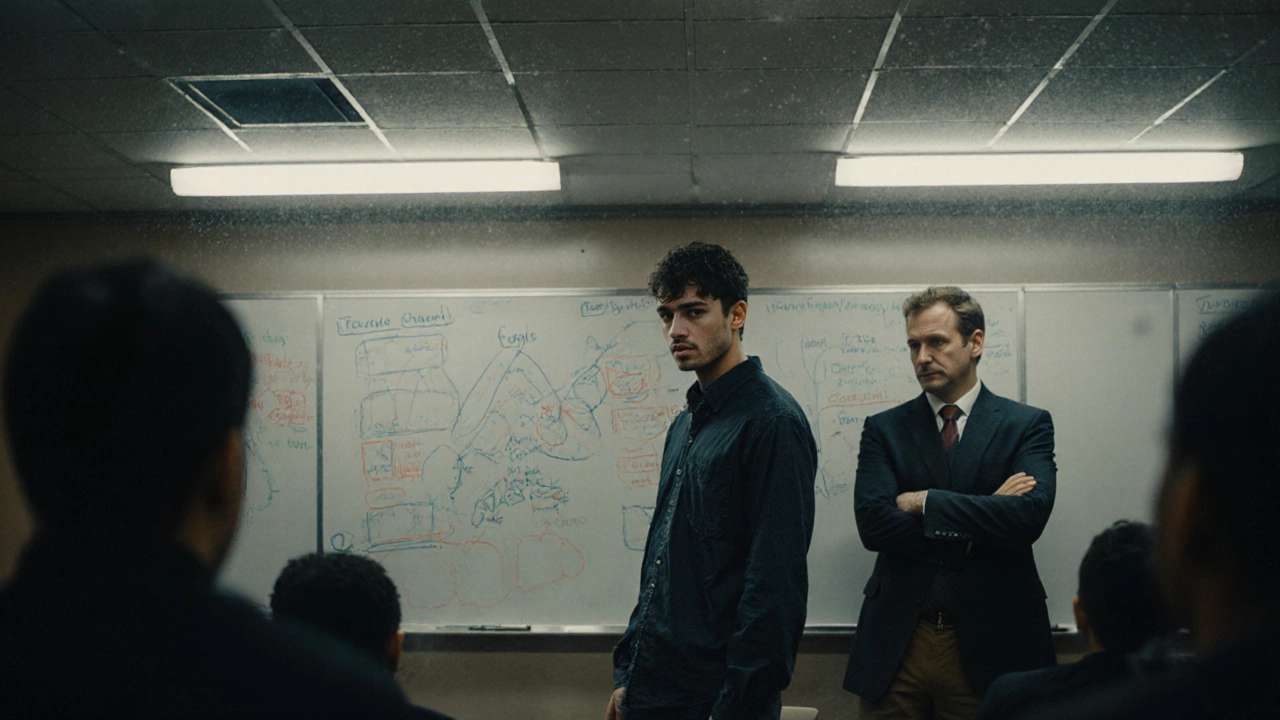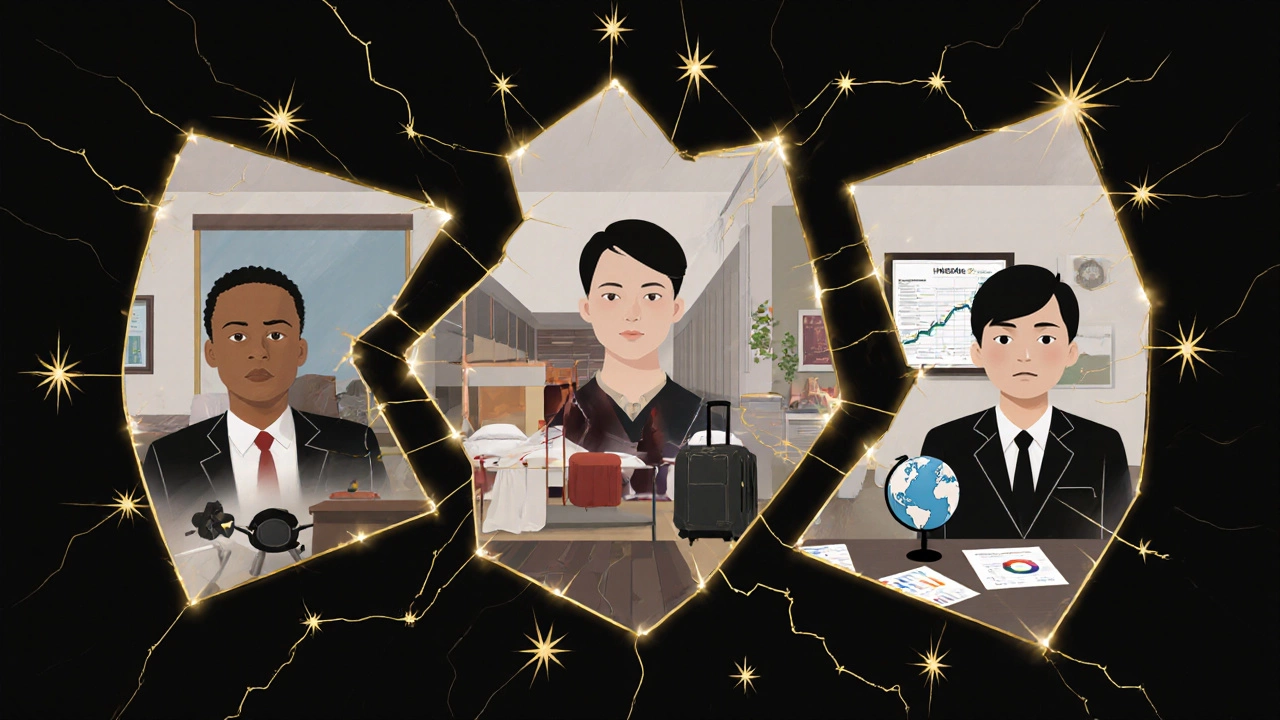Which MBA Program Is the Toughest? Real Insights from Top Schools
 Oct, 27 2025
Oct, 27 2025
MBA Difficulty Calculator
How challenging is your ideal MBA?
Answer 4 questions about your background and preferences to discover which top program's challenges align with you best.
Your MBA Challenge Profile
Top Recommendation
Stanford GSB
Emotional pressure, entrepreneurship focus, innovation expectations
MIT Sloan
Speed, data-driven, perfectionism in operations
Harvard Business School
Case method pressure, fear of being wrong
INSEAD
Intense global rotations, relentless pace
Wharton
Business analytics, coding demands
Chicago Booth
Financial modeling, real portfolio management
If you're thinking about an MBA, you’ve probably heard whispers about which programs are the toughest. Some say it’s Stanford. Others swear by MIT Sloan. But here’s the truth: toughest MBA doesn’t mean the one with the most homework. It’s the one that breaks you down, rebuilds you, and leaves you wondering if you made the right choice-then proves you did.
What Makes an MBA Tough?
Toughness in an MBA isn’t about grades alone. It’s about sleepless nights, constant pressure, and being pushed beyond what you thought was possible. The best programs don’t just teach business-they test your limits.
At top schools, students juggle 20+ hours of classes a week, 15+ case studies to prep before each class, group projects with people from 10 different countries, internships, recruiting events, and still somehow find time to network. Add in the emotional toll of being surrounded by people who’ve led teams, launched startups, or saved lives-and you’re not just studying business. You’re competing with people who’ve already changed the world.
It’s not the syllabus that breaks you. It’s the expectation. You’re expected to show up with answers, not questions. To lead without title. To deliver under pressure. And to do it all while your peers are getting promoted, buying homes, or starting families.
Stanford GSB: The Pressure Cooker
Stanford Graduate School of Business is often called the hardest MBA in the world-and not because of the exams. It’s the culture.
Students here don’t just study cases. They live them. The Entrepreneurial Management course alone requires you to pitch a real startup idea to venture capitalists, then defend it in front of your classmates. One student told me she spent 72 hours straight on a team project because her group couldn’t agree on the financial model. She didn’t sleep. She cried. And then she got a job at Sequoia Capital.
Stanford doesn’t rank students. But everyone knows who’s ahead. The silence in the library speaks louder than grades. The pressure to innovate, to be the next Mark Zuckerberg or Reese Witherspoon’s startup founder, is constant. You’re not just learning to run a company-you’re being molded to lead one.
MIT Sloan: Data, Speed, and No Mercy
If Stanford is emotional intensity, MIT Sloan is cold, hard speed. The program is built on a philosophy: Think fast. Act faster.
MIT’s core course, Operations Management, gives students a real factory floor problem on Monday. By Friday, you’re expected to design a solution, run simulations, and present it to a plant manager. No theory. No fluff. Just results.
Students average 6 hours of sleep a night during peak term. The median GPA is 3.7-but you’re not graded against the curve. You’re graded against perfection. If your model has a 2% error? You redo it. If your team misses a deadline? You lose points. No excuses. No extensions. The school doesn’t care if you’re sick. It cares if the numbers add up.
One graduate from India told me he lost 18 pounds in his first semester. Not because he was dieting. Because he forgot to eat. He was too busy running Monte Carlo simulations for a supply chain project.

Harvard Business School: The Case Method That Never Ends
Harvard’s case method is legendary. And brutal.
Each class, you’re assigned 2-3 cases. Each case is 10-15 pages. You have 4 hours to prep. Then you’re called on randomly. If you haven’t done the work, you’re embarrassed in front of 90 people. And you’ll be called on again. And again.
There’s no lecture. No slides. Just questions. And if you don’t have the answer, the professor doesn’t give it. He asks someone else. And then someone else. And then he asks you again. Three times. In front of everyone.
Students say the real challenge isn’t the cases-it’s the fear of being wrong. At Harvard, being quiet is worse than being wrong. Silence means you didn’t prepare. And in a class of 900 students, that gets noticed.
One student from Nigeria said he spent 12 hours a day reading cases for six weeks straight. He didn’t leave his room. He didn’t talk to his roommate. He just read. And when he finally spoke up in class, he got a standing ovation. He cried afterward.
Other Contenders: Chicago Booth, Wharton, INSEAD
Chicago Booth’s Financial Markets course is a gauntlet. You’re given a real portfolio. You manage it. You lose money. You learn why. The professor doesn’t tell you what to do. He just asks, What did you learn?
Wharton’s Business Analytics program demands coding skills most students don’t have. You’re expected to write Python scripts to predict sales trends. No prior experience? Tough. You’ll learn it over a weekend.
INSEAD’s one-year program is the most intense of all. You finish in 10 months. That means 3 terms, each packed with 5 courses, 10 cases, 2 group projects, and 1 international module. You move from France to Singapore to Abu Dhabi in 90 days. No time to adjust. Just adapt.

Who Survives? And Why?
The toughest MBA isn’t for everyone. And that’s the point.
People who thrive are not the smartest. They’re the most resilient. They’re the ones who show up tired but still ask questions. Who admit when they don’t know. Who help their teammates even when they’re drowning themselves.
At Stanford, the quiet kid who never spoke in class ended up leading the most successful student startup. At MIT, the student who failed her first simulation came back and won the annual innovation challenge. At Harvard, the guy who cried after being called on twice in a row? He’s now a partner at McKinsey.
The common thread? They didn’t give up. They didn’t compare themselves to others. They focused on one thing: getting better today than they were yesterday.
Is the Hardest MBA Worth It?
Yes-if you want to be changed, not just trained.
The toughest programs don’t just give you a diploma. They give you a new identity. You stop thinking like a manager. You start thinking like a leader. You stop waiting for permission. You start creating opportunities.
Graduates from these schools don’t just get jobs. They get calls. From investors. From CEOs. From governments. Because they’ve proven they can handle pressure. They’ve proven they can lead when everything’s falling apart.
Is it worth the sleepless nights? The anxiety? The self-doubt?
If you’re looking for an easy path to a higher salary, no. But if you want to build something that lasts-something that changes how people work, think, or live-then yes. It’s not just worth it. It’s the only path that matters.
Is the Stanford MBA really the hardest?
Stanford’s MBA is often seen as the hardest because of its emotional and entrepreneurial pressure. Students are expected to launch real startups, pitch to investors, and lead teams under intense scrutiny. The lack of formal ranking creates a culture where everyone competes silently, making the stress invisible but constant. It’s not about grades-it’s about proving you can create something meaningful under pressure.
Can someone with no business background handle a tough MBA?
Yes, but it’s harder. Top programs like MIT Sloan and Wharton expect some quantitative skills, but they also welcome people from engineering, medicine, or the arts. The key is preparation. Take free online courses in accounting or Excel before starting. Join study groups early. Don’t wait to ask for help. Many successful grads started with zero business experience-what got them through was persistence, not prior knowledge.
How many hours do students actually study per week?
On average, students at top MBA programs spend 50-70 hours a week on academics, group work, recruiting, and networking. During peak weeks-like before finals or during recruiting season-it can hit 90 hours. That’s more than a full-time job, plus overtime. Sleep drops to 5-6 hours a night. Many students rely on coffee, naps, and sheer willpower to get through.
Do grades matter in the toughest MBA programs?
Grades matter less than you think. At Stanford and Harvard, most students graduate with a GPA above 3.5. What matters more is participation, leadership in group projects, and how you perform during recruiting. Employers care about your ability to solve real problems under pressure, not your test scores. A B+ with strong leadership experience beats an A with silence in class.
What’s the dropout rate in these programs?
Dropout rates at top MBA programs are extremely low-under 2%. But many students consider quitting. The difference between those who stay and those who leave isn’t intelligence. It’s resilience. Those who survive learn to ask for help, manage their mental health, and accept that perfection isn’t the goal-progress is. Schools now offer counseling, peer coaching, and wellness programs because they know the mental toll is real.
Is a one-year MBA like INSEAD tougher than a two-year MBA?
Yes, and here’s why: INSEAD packs two years’ worth of content into 10 months. You have three 12-week terms, each with five courses, multiple group projects, and international rotations. There’s no summer break to reset. No time to recover. You’re constantly moving-geographically and mentally. The pace is relentless. Students say it’s like running a marathon while juggling five balls. But those who finish often say it was the most transformative experience of their lives.
Final Thought: The Real Test Isn’t the MBA-It’s You
The toughest MBA doesn’t exist on a list. It exists in the quiet moments-when you’re alone at 2 a.m., staring at a spreadsheet, wondering if you’re good enough. That’s when the real MBA begins.
It’s not about which school has the hardest syllabus. It’s about which one pushes you to become someone you didn’t know you could be.
If you’re ready for that-then go. No matter how hard it seems. Because the reward isn’t the diploma. It’s the person you become on the other side.